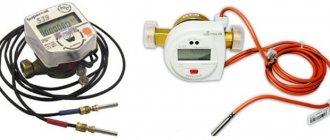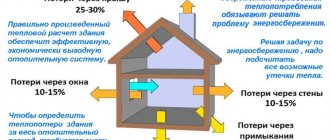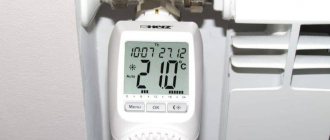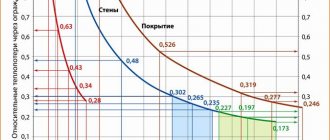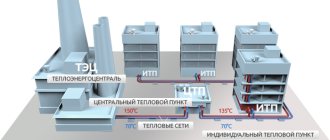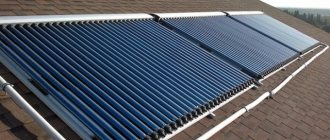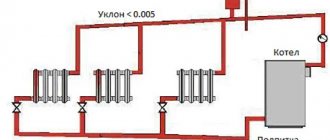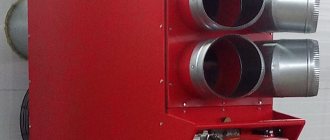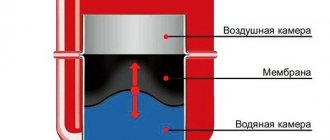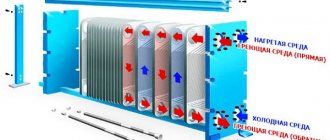Published by lpunity on 11/12/2018
UUTE - what is it? The easiest way to say it is that this is a set of heat meters that monitor the condition of the building’s heating system. This formulation is quite acceptable, but does not fully explain the concept. UUTE (thermal energy metering unit) is a set of technical means installed on the pipeline to control the parameters of the coolant. The characteristics of liquid moving along highways are regularly measured, recorded and subjected to various calculations.
Why do you need a node?
The introduction of a metering system for a heating unit in an apartment building allows not only to control the amount of energy consumed and the parameters of water in the pipes. Having the most complete information on hand, the user can quickly optimize the operation of the equipment. The phrase “commercial heat metering unit” is often used. What it is? This means that in all office and residential buildings connected to external sources of heat and hot water supply, UUTE must be installed. The procedure is carried out in strict accordance with building codes. The standard diagram of a thermal heating unit provides for the presence of:
- indicators (pressure, temperature);
- converters (the same parameters plus coolant flow);
- computer;
- shut-off valves.
Additional equipment for UUTE helps simplify the operation process and make it more efficient. In multi-storey residential buildings, where a heating unit elevator is installed and the risers are vertical, metering is often carried out only using a common meter. This is caused by the technological features of the building's engineering system.
The concepts of “heating unit” and “heating point” are often combined. What is the difference? The latter is the link between the main and distribution networks. Sometimes it can be used as a commercial heat metering unit. This is an individual point that serves a specific facility. It is located in the basement or attic. However, in most cases, the TP serves several houses at once and is located in a separate building.
Design and principle of operation of a heating elevator
At the entry point of the heating network pipeline, usually in the basement, a node that connects the supply and return pipes catches your eye. This is an elevator - a mixing unit for heating a house. The elevator is manufactured in the form of a cast iron or steel structure equipped with three flanges. This is an ordinary heating elevator; its operating principle is based on the laws of physics. Inside the elevator there is a nozzle, a receiving chamber, a mixing neck and a diffuser. The receiving chamber is connected to the “return” using a flange.
Superheated water enters the elevator inlet and passes into the nozzle. Due to the narrowing of the nozzle, the flow speed increases and the pressure decreases (Bernoulli's law). Water from the return line is sucked into the area of low pressure and mixed in the mixing chamber of the elevator. The water reduces the temperature to the desired level and at the same time the pressure decreases. The elevator operates simultaneously as a circulation pump and mixer. This is briefly the principle of operation of an elevator in the heating system of a building or structure.
Thermal unit diagram
Adjustment of the coolant supply is carried out by the elevator heating units of the house. The elevator is the main element of the heating unit and needs piping. The control equipment is sensitive to contamination, so the piping includes dirt filters that are connected to the “supply” and “return”.
The elevator harness includes:
- mud filters;
- pressure gauges (inlet and outlet);
- temperature sensors (thermometers at the elevator inlet, outlet and return);
- valves (for preventive or emergency work).
This is the simplest circuit option for adjusting the temperature of the coolant, but it is often used as the basic device of a thermal unit. The basic elevator heating unit for any buildings and structures provides regulation of the temperature and pressure of the coolant in the circuit.
The advantages of using it for heating large objects, houses and high-rise buildings:
- reliability due to the simplicity of the design;
- low cost of installation and components;
- absolute energy independence;
- significant savings in coolant consumption up to 30%.
But while there are undeniable advantages of using an elevator for heating systems, the disadvantages of using this device should also be noted:
- the calculation is done individually for each system;
- a mandatory pressure drop is required in the heating system of the facility;
- if the elevator is unregulated, then it is impossible to change the parameters of the heating circuit.
Elevator with automatic adjustment
Currently, elevator designs have been created in which the nozzle cross-section can be changed using electronic adjustment. This elevator has a mechanism that moves the throttle needle. It changes the lumen of the nozzle and as a result the coolant flow changes. Changing the lumen changes the speed of water movement. As a result, the mixing ratio of hot water and water from the “return” changes, thereby achieving a change in the temperature of the coolant in the “supply”. Now it’s clear why water pressure is needed in a heating system.
The elevator regulates the flow and pressure of the coolant, and its pressure drives the flow in the heating circuit.
Types of heat meters
The diagram of a thermal heating unit with a heat meter makes it possible to avoid unnecessary energy consumption. It is sufficient to respond promptly and competently to instrument readings. UUTE receives data from sensors and converters installed on pipes. They send signals about the state of the water to the computer. The latter makes calculations according to certain algorithms, after which the commercial heat metering unit provides information to the equipment user. The meter saves measurement results in an archive, which also records error data, which allows for a comprehensive analysis of the system’s operation.
Thus, the heat metering unit in an apartment building makes it possible to carry out the most accurate mutual settlements between the supplying and consuming parties, while being an effective means of control. The procedure for installing UUTE for water heating requires the presence of flow converters. They are used to measure the amount of water passing through a pipe in a certain time. Flow can be mass (measured in kg/h, kg/min, etc.) and volumetric (m³/min, m³/s, etc.). The heat metering unit is installed in accordance with what type of flow meter is used. Depending on the measurement method, transducers are:
- tachometer;
- ultrasonic;
- electromagnetic;
- variables;
- vortex;
- combined.
Quite often, the thermal energy metering unit includes tachometer flow meters, which are very simple and reliable. They come in turbine, vane, and screw types. A similar flow meter on KUUTE is an opportunity to determine the amount of heat by converting the energy of the movement of the water flow into rotation of the measuring element. An impeller, turbine or propeller is placed in the path of the coolant, and a special counter measures the number of revolutions and converts them to the desired value.
The design of a thermal energy metering unit with other types of flow meters is distinguished by the absence of moving parts. Measurements here are carried out using electronics. Vortex models determine the speed of movement based on the characteristics of the vortices that arise due to the fact that water has to overcome a special obstacle. If the thermal energy metering and regulation unit is equipped with an ultrasonic flow meter, an ultrasonic signal emitter with a receiver is attached to the pipe. The devices are mounted opposite each other (the exact position is determined by the instructions). The receiver receives the signal passed from the emitter through the liquid flow. The parameters of the coolant are also determined by the speed of ultrasound. The schematic diagram of a heating station with a metering unit equipped with an electromagnetic flow meter provides for taking readings due to the ability of water to generate current while moving in a magnetic field.
Hot water supply in heating systems
DHW in multi-storey buildings is usually centralized, with water heated in boiler rooms. Hot water supply is connected from heating circuits, both single-pipe and double-pipe. The temperature in the hot water tap in the morning can be warm or cold, depending on the number of main pipes. If there is a single-pipe heating supply to an apartment building with a height of 5 floors, then when you open a hot tap, cold water will flow out of it first within half a minute.
The reason lies in the fact that at night, rarely do any residents turn on the hot water tap, and the coolant in the pipes cools down. As a result, there is an overconsumption of unnecessary cooled water, since it is drained directly into the sewer.
Unlike a single-pipe system, in a two-pipe version, hot water circulates continuously, so the above-described problem with hot water does not arise there. True, in some houses, a riser with pipes is looped through the hot water supply system - heated towel rails, which are hot even in the summer heat.
In the summer, the entire system that provides central heating in an apartment building is tested. Utility services carry out routine and major repairs on the heating main, while disconnecting certain sections of it. On the eve of the upcoming heating season, the repaired heating main is re-tested (for more details: “Rules for preparing a residential building for the heating season”).
Features of heat supply in an apartment building, details in the video:
Elevator unit
The principle of operation of a heating unit in an apartment building is known to everyone who is interested in it. The coolant enters the building's heating system through the main pipeline and is collected through the return pipeline. Hot water from the boiler room is sent to the basement to pass through the heating unit. The design of the thermal unit provides for the presence of shut-off valves in the form of steel ball valves. In traditional configurations, valves perform this function.
If the water temperature does not exceed 95°C, it is distributed among the rooms through a manifold equipped with balancing taps. However, quite often hotter coolant enters the heating units of apartment buildings, which is contraindicated in modern pipes. It needs to be cooled to a certain level. To solve this problem, an elevator is provided in the thermal unit. This device is the simplest and cheapest means of cooling the coolant. Here it is mixed with the cooled liquid from the return pipeline. Having passed through the thermal elevator unit, the water reaches the required temperature, after which it can be safely directed to the heating devices. In addition, this equipment performs the function of a circulation pump.
The thermal unit elevator device includes the following components:
- jet elevator;
- mixing chamber;
- nozzle;
- "harness".
The “piping” includes locking mechanisms and control pressure gauges with thermometers. Recently, the installation of thermal units with electric elevators has become widespread. Classic models work without electricity. An automated thermal energy metering unit independently regulates the water temperature. Unfortunately, ease of use is not yet sufficiently supported by the reliability of such systems. At the same time, they cost significantly more.
At this stage, the design of a thermal unit with a traditional elevator looks more reliable. The efficiency of its operation does not depend on the vagaries of power supply and hydraulic/thermal surges in pipes. You don't need to constantly look after him. In order for the heat metering unit circuit to be implemented effectively, it is enough to select the correct nozzle diameter. What equipment should be for a particular facility can only be determined by a specialist who has permission to conduct such activities.
Diagram of thermal units
- With parallel single-stage hot water connection. This scheme is the simplest and most popular, since the heating system is carried out in parallel with the hot water supply system. There is only one drawback - high consumption of network water.
- With serial two-stage hot water connection. This scheme consists of two stages: the first is responsible for the return pipeline of the heating system, the second is responsible for the supply pipeline. Its advantage is a significant reduction in network water consumption. The disadvantage is the need to install an automatic control system.
- With mixed two-stage hot water heater connection. The most convenient scheme of all the above. The connection is made in series, not in parallel. It is used for both elevated and normal temperature schedules.
Installation Features
Installation of a heat metering unit in an apartment building is divided into several main stages:
- Study and analysis of the object.
- Creation and approval of the project.
- Assembly and adjustment.
- Organization of monitoring.
- Providing a diagram of the heating unit of an apartment building to the heating supply organization and obtaining an operating permit.
The cost of the procedure depends on the characteristics of the object and can vary significantly. If it is necessary to replace the thermal energy metering unit, the sequence of actions is approximately the same. The most critical stage is the development of the project and selection of equipment. Naturally, the installation of thermal energy metering units must be carried out with maximum care and precision. However, if the initial calculations turn out to be erroneous, even high-quality, expensive devices will not provide the required accuracy of readings.
When a heating unit is installed in a private house, the coordination scheme may be slightly different. In any case, going through the authorities on your own will require serious time investment. As a rule, the installation of thermal energy metering units includes this service. Decide for yourself what is preferable to you - pay a little extra or save through your own efforts. However, keep in mind that it is much easier for experienced representatives of a construction organization to obtain permission than for an individual.
Automation of heat metering units makes it possible to organize remote data collection from meters, which greatly simplifies facility monitoring. UUTE maintenance should be trusted to professionals. Independence in this matter, as in the installation of heat metering units in Moscow, can lead to significant financial losses. If equipment breakdown is not noticed in time, repairs may take a long time, and all this time you will be overpaying for unused heat. If you are interested in whether it is possible to install UUTE on the heating unit of your home and other questions on this topic, you can get answers to them on our website.
Composition and location
Apartment buildings can have different configurations. Because of this, the UUTs may be different in appearance and design from each other.
Such units can also be installed for a private house if it is connected to a central heating system
However, the main elements are included in each node:
- Shut-off and control valves. Devices and devices for regulating and completely shutting down various components of the heating system.
- Heat meter. The main measuring device, which may differ in design, but is required to give readings of the main parameters of heat supply.
- Sump. Garbage collection site. The main purpose of this device is to prevent foreign objects and substances from entering the heating system.
- Flow meter. A device that takes into account coolant flow and helps regulate its supply.
- Elevator. The elevator heating unit serves to regulate the temperature of the coolant. In this device, by mixing hot and cooled coolant (return), adjustment occurs to standard values.
- Thermal sensor. A measuring device for recording the temperature of the coolant when returning from the heating system.
- Auxiliary equipment. Many control centers are provided with additional devices and units. Modern technologies can significantly expand control capabilities.
The main requirement for the arrangement of instruments and all components of the control system is maximum accuracy and efficiency. Therefore, there are certain rules for the sequence and location of the main nodes. Here are just a few of them:
- Place metering devices at the interface, as close as possible to valves and coolant supply regulators.
- Prohibition on the installation of additional pipeline outlets that bypass sensors.
- The temperature sensor on the return line is placed in front of the valve on the outside.
- Place instruments so that there is good visual access for taking instrument readings and servicing them.
This is interesting: the principle of a two-way valve for heating.
Following the basic instructions, it will not be difficult to equip a heating metering unit if you have all the necessary components for its operation.
How much does it cost to install a common house heat metering unit?
On average, installation for residents of a 100-apartment building will cost 60-300 thousand rubles. This variation is due to the fact that the price consists not only of the cost of the equipment itself, but also of installation work.
Much depends on the condition of the pipes. It may be necessary to remove some communications for proper installation. In addition, if cold and hot water have separate lines, you will have to install two devices, which will significantly increase the total amount in receipts.
Installation of UUTE
Most Russian multi-apartment residential buildings of old construction are connected to a centralized heating system. At the same time, payment for heat is carried out, as they say, “according to standards” based on 1 sq. meter of total room area. This is inconvenient because such payment does not depend on the actual temperature in the room. But houses are located at different distances from boiler houses and heat losses occur as hot water passes through heating mains. This means that some residents receive more heat, while others receive less, but pay the same amount. Not fair.
And you have to pay all year round, that is, even in the summer, in the absence of a heating season. Because the norms are designed for the whole year, otherwise it will be very expensive. But it doesn’t work out any other way. Why? Yes, because old houses built in Soviet and post-Soviet times are not equipped with individual heat energy metering units (UUTE). This means that it is not possible to determine exactly how much heat a particular house received during the heating season.
Which exit? Yes, it’s very simple: install this same UUTE on your home.
The term is defined in the Decree of the Government of the Russian Federation No. 1034 “On commercial metering of thermal energy and coolant.” It means a technical system consisting of:
- measuring instruments;
- thermal energy metering devices;
- heat consumption metering devices;
- devices for monitoring and recording coolant parameters.
The heat metering system itself is expensive, and its installation is also expensive. At whose expense is this happening? Of course, at the expense of the owners of premises in an apartment building, who made the appropriate decision at the general meeting. Indeed, by virtue of Federal Law No. 261 “On energy saving and on increasing energy efficiency and on introducing amendments to certain legislative acts of the Russian Federation”, it is the owners of buildings, structures, structures, residential, country or garden houses, premises in apartment buildings that are required to bear the costs for installation of metering devices.
General structure of devices and levels in the metering unit
All modernized resource accounting units used today have a multi-stage complex system, which includes a number of automated levels.
The level diagram is presented as follows:
- The top level is the management of the accounting unit of the automated system, the software shell of which is the automated control system.
- The middle level consists of a computer, a power supply unit, a GSM modem and an additional set of elements.
- The lower level consists of resource pressure sensors, temperature sensors and other components. They collect the necessary data about the measured environment.
Further, entering the middle level, instrumentation information data is accumulated in the flow computer. From here they are transferred to the next - upper level of the complex.
Transmission methods are different: the GSM channel is popular today, but transmission via wired networks is also quite possible.
The last years of the 20th century were characterized by the absence of an upper automated commercial metering unit. Information indicators stored in volatile memory were collected manually by citizens of our country; the alternative to manual was a semi-automatic scheme. Rapid progress contributed to the development of automation; the result was a noticeable drop in the cost of equipment for automated units, which made it possible to eliminate manual removal, leaving a wide range of technical equipment for people to use that is easy to maintain.
At the top level of automation, key data is processed within the ACS software shell. This program allows you to save all information and receive it in a convenient form. The ACS monitor receives all parameters from the sensors of the controlled environment, and also receives messages about accidents or breakdowns. In addition to automated elements, a commercial metering unit can be equipped with shut-off valves of different profiles. In addition, a commercial metering unit may have drain channels and other components.
Monitoring gas flow readings involves the use of diaphragm devices that use capacitive sensors operating at low pressures.
The standards for diaphragm metering units are very high:
- measurement accuracy level from 0.5 to 2%;
- the flow rate is measured over a wide range;
- measuring flow rates in small sections of the pipeline;
- high sensitivity of sensors.
Flow measurement involves equipping metering units with auxiliary equipment, which can be offered at different prices.
Therefore, commercial metering units are divided into three categories, according to the price characteristics of the equipment:
The first group is inexpensive units. These are tachometers and flow meters, level meters. This equipment performs accounting for cold water and waste water. The second group is nodes with an average cost. These are commercial heat metering units. They provide for the installation of several sensors for temperature and excess pressure. Flowmeters monitor vortex, electromagnetic, ultrasonic and variable differential pressure. The heating temperature is measured by thermocouples and thermometers that record the resistance level. The third group is expensive components. Perform accounting for the consumption of oil and petroleum products. The requirements for metering units are always high; the extremely important parameters are measurement accuracy and operational reliability, and even duplication of measurement parameters due to the high price of raw materials.
Water metering units
As you know, water and heat metering units have different designs, implement their functions differently, and are considered separately. Water meters are distinguished by type, nominal diameter, they all have technical conditions for the installation of control devices. The sensitivity of a commercial device and the ability to measure large volumes of water consumption depend on the nominal diameter.
Devices are also classified according to their operating principle; cheap flow meters are used in apartments and offices. In enterprise environments, complex, high-precision vane and turbine flowmeters are selected for operation.
A water metering unit, depending on the functions performed, can be very complex, recording hourly, daily and monthly readings. Just like thermal metering units, modern water meters are equipped with interfaces that allow readings to be displayed on a computer. Depending on the type of power supply, metering units can be: autonomous (from “batteries”) or from an outlet. Classic flowmeters (tachometric) do not have power supply.
After studying the technical specifications, an application is submitted to the water utility for installation of a water meter, or you can also contact a specialized design and installation company. She will select and purchase equipment, coordinate the project with the resource supply company, perform installation, commissioning, and ensure approval and launch of the commercial unit for its further operation.
The UUTE device can be divided into the following stages:
Inspection of the facility for the installation of UTE.
A specialist (designer) goes to the site, inspects the premises of the heating unit, and takes the necessary measurements. Next, calculations are made and, taking into account the features of this heat supply system, the necessary equipment and instrumentation are selected. After this, the manager of the commercial department calculates, draws up a technical and commercial proposal and brings it to the Customer. These services are provided by our organization free of charge.
Development and coordination of the UUTE project with the energy supply organization.
The UUTE project is developed in accordance with all rules and regulations and is submitted for consideration to the energy supply organization. After the comments of the energy supplying organization have been eliminated, an approval stamp is placed on the UTE project. The services of the energy supply organization for approving the UUTE project are paid.
Installation of UUTE (piping + electrical).
- Installation of UUTEis done in the following sequence:
- installation of “modules” is carried out - straight sections of pipelines with simulators of flow meters, thermal converters, shut-off valves, pressure gauges and thermometers installed on them (the work is carried out on the territory of the installation site);
- insertion of “modules” into the pipelines of heat supply systems (work is carried out in the thermal center of the building);
- installation of the electrical part of the UUTE - connection of flow meters and sensors to the heat meter.
Commissioning and commissioning works at UUTE.
After all installation work has been completed and the coolant has been supplied, commissioning work is carried out at the UUTE. The correct operation of individual devices and the entire UTE as a whole is checked. The heat meter archives are being accumulated. After operating the UUTE for a certain time, from 3 to 10 days at different energy supply organizations, the unit is ready for commissioning
Commissioning of UUTE.
After commissioning has been completed, an inspector from the energy supplying organization is called to accept the UUTE into operation. After inspection of the UTE, a Certificate of Acceptance of the UTE for primary operation is drawn up and signed, and payment for the consumed thermal energy according to the UTE is authorized. The services of the energy supply organization for calling an inspector to accept the UTE are paid.
TEK LLC employs a well-coordinated team of highly qualified specialists with extensive professional experience - designers, installers, instrumentation adjusters who can solve various problems and carry out work of any complexity on the installation of UUTE in the shortest possible time.
When installing UUTE, TEK LLC uses reliable modern equipment that meets all the standards and requirements of energy supply organizations. After the UUTE is put into operation, TEK Service LLC carries out maintenance .
The cost of design, installation, as well as obtaining the necessary documentation for UUTE depends on the design solution (technical specifications for the work), contact a technical specialist to clarify the cost.
